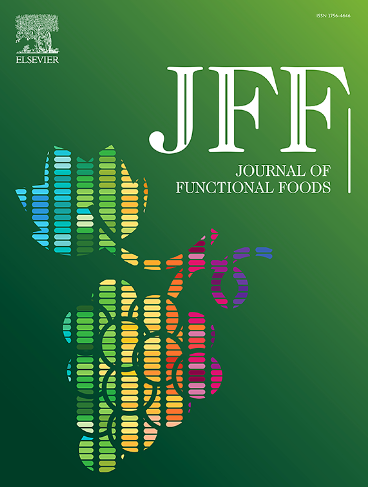Pulsed electric field-treated malvacin-3-O-galactoside and whey protein complexes alleviate silica-induced pulmonary fibrosis by promoting cellular mitochondrial autophagy and inhibiting cellular pyroptosis
IF 3.8
2区 农林科学
Q2 FOOD SCIENCE & TECHNOLOGY
引用次数: 0
Abstract
Malvacin-3-O-galactoside (M3G) is the most abundant anthocyanins component in blueberries and has high biological activity. We investigated the effect of a pulsed electric field (PEF) on the interaction between whey protein (WP) and M3G. Stability experiments showed that PEF significantly improved stability of the anthocyanin-whey protein complex (M3G-WP), particularly at 15 kV/cm for 30 min. PEF-treated M3G-WP (PEF-M3G-WP) was used as a model of silica-induced lung fibrosis to investigate its anti-inflammatory activity and molecular mechanisms. Both in vivo and in vitro experiments demonstrated that PEF-M3G-WP alleviated inflammation in macrophages. It upregulated the expression of PINK1 and Parkin and downregulated the expression of NLRP3, CASP1, and GSDMD NT. Furthermore, qPCR experiments showed that PEF-M3G-WP inhibited the release of inflammatory factors IL1b and IL18 by upregulating Atg5 and downregulating P62 in alveolar macrophage cell lines (MH-S). In summary, PEF-treated M3G-WP may be a potential method for alleviating pulmonary fibrosis.

脉冲电场处理的malvaci -3- o -半乳糖苷和乳清蛋白复合物通过促进细胞线粒体自噬和抑制细胞热凋亡来减轻二氧化硅诱导的肺纤维化
malvacin -3- o -半乳糖苷(M3G)是蓝莓中含量最多的花青素成分,具有较高的生物活性。我们研究了脉冲电场(PEF)对乳清蛋白(WP)与M3G相互作用的影响。稳定性实验表明,PEF显著提高了花青素-乳清蛋白复合物(M3G-WP)的稳定性,特别是在15 kV/cm下持续30分钟。PEF处理的M3G-WP (PEF-M3G-WP)作为二氧化硅诱导的肺纤维化模型,研究其抗炎活性和分子机制。体内和体外实验均表明,PEF-M3G-WP可减轻巨噬细胞的炎症。上调PINK1和Parkin的表达,下调NLRP3、CASP1和GSDMD NT的表达。qPCR实验表明,PEF-M3G-WP通过上调Atg5和下调P62抑制肺泡巨噬细胞系(h - s)炎症因子IL1b和IL18的释放。综上所述,pef治疗的M3G-WP可能是一种缓解肺纤维化的潜在方法。
本文章由计算机程序翻译,如有差异,请以英文原文为准。
求助全文
约1分钟内获得全文
求助全文
来源期刊

Journal of Functional Foods
FOOD SCIENCE & TECHNOLOGY-
CiteScore
9.60
自引率
1.80%
发文量
428
审稿时长
76 days
期刊介绍:
Journal of Functional Foods continues with the same aims and scope, editorial team, submission system and rigorous peer review. We give authors the possibility to publish their top-quality papers in a well-established leading journal in the food and nutrition fields. The Journal will keep its rigorous criteria to screen high impact research addressing relevant scientific topics and performed by sound methodologies.
The Journal of Functional Foods aims to bring together the results of fundamental and applied research into healthy foods and biologically active food ingredients.
The Journal is centered in the specific area at the boundaries among food technology, nutrition and health welcoming papers having a good interdisciplinary approach. The Journal will cover the fields of plant bioactives; dietary fibre, probiotics; functional lipids; bioactive peptides; vitamins, minerals and botanicals and other dietary supplements. Nutritional and technological aspects related to the development of functional foods and beverages are of core interest to the journal. Experimental works dealing with food digestion, bioavailability of food bioactives and on the mechanisms by which foods and their components are able to modulate physiological parameters connected with disease prevention are of particular interest as well as those dealing with personalized nutrition and nutritional needs in pathological subjects.
 求助内容:
求助内容: 应助结果提醒方式:
应助结果提醒方式:


